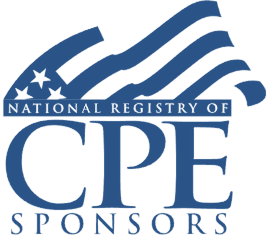Welcome! Save 30% on all CLE, CPE, and Professional Skills webinars, plus 15% off any annual pass with code HOLIDAY25
About the Course
Introduction
This CLE/CPE webinar will provide a comprehensive and practical guide to structuring a beneficiary defective irrevocable trust (BDIT). The panel will identify circumstances in which BDITs are an optimal strategy, properly drafting the BDIT to avoid adverse tax consequences, structuring sales/loans to BDITs, incorporating Crummey powers into the instrument, and other key considerations when structuring a BDIT.
Description
A BDIT can provide significant estate and tax planning opportunities for clients under the right circumstances. BDITs allow a beneficiary to form assets while also maintaining control and protecting assets from estate taxes, creditors, and other claims. Trusts and estates counsel must understand the circumstances where BDITs will provide the best benefits to clients, key drafting considerations, and related tax implications.
BDITs are irrevocable trusts used to move appreciating assets outside of a client's estate to protect against creditors and provide potential tax savings. Provisions are included when structuring a BDIT to ensure that the trust qualifies as a grantor trust with the beneficiary being the owner of the trust assets for income tax purposes. In addition, certain transactions with BDITs can be utilized to minimize income taxes, transfer appreciating assets, and reduce estate and transfer taxes for beneficiaries.
Trusts and estates counsel must recognize key issues and pitfalls to avoid regarding (1) securing the shifting of appreciation and income tax burn, (2) structuring the sale of assets to BDITs, (3) creditor protection, and (4) administrative requirements when structuring and utilizing BDITs.
Listen as our panel discusses circumstances in which BDITs are an optimal strategy, properly drafting the BDIT to avoid adverse tax consequences, structuring sales/loans to BDITs, incorporating Crummey powers into the instrument, and other key considerations when structuring a BDIT.
Presented By

Mr. DiPietro collaborates with families and their advisors to create customized estate plans that consider the specific needs of each family, ensuring the protection and seamless transfer of wealth. He has extensive experience in crafting estate plans tailored to the unique requirements of modern families. Mr. DiPietro a certified public accountant with two advanced degrees in taxation, has successfully implemented plans that reduce income, gift, estate, and generation-skipping transfer taxes in the context of succession planning for individuals and privately held businesses.

Ms. Quintero advises clients on complex estate and wealth planning, estate and trust administration, and business succession planning. She works with individuals, families, and business owners to craft customized wealth transfer and business success solutions, including the use of revocable and irrevocable trusts, Intentionally Defective Grantor Trusts, Beneficiary Defective Grantor Trusts, Irrevocable Life Insurance Trusts, and Grantor Retained Annuity Trusts. Ms. Quintero regularly works with clients to modify existing trusts to address unintended tax consequences, changes in family situations, and other life events.
-
This 90-minute webinar is eligible in most states for 1.5 CLE credits.
-
CPE credit is not available on recordings.
-
BARBRI is a NASBA CPE sponsor and this 90-minute webinar is accredited for 1.5 CPE credits.
-
Live Online
On Demand
Date + Time
- event
Tuesday, July 30, 2024
- schedule
1:00 p.m. ET./10:00 a.m. PT
- Mechanics of BDITs; benefits and risks
- Structuring BDITs; key provisions
- Income tax considerations
- Sales and loans to BDITs
- Common challenges and mechanisms to avoid them
The panel will discuss these and other key issues:
- What items must be considered when utilizing a BDIT?
- What are the key provisions when drafting BDITs?
- How can BDITs minimize adverse tax consequences?
- How to shift appreciation and income tax burn
- What are the key considerations when structuring a sale or loan to a BDIT?
- Best practices for trusts and estates counsel
Learning Objectives
After completing this course, you will be able to:
- Recognize the tax implications and key provisions when utilizing BDITs
- Identify key tax provisions of BDITs and their impact on estate and tax planning
- Ascertain key tax risks and planning methods for sales or loans to BDITs
- Understand when a loss of a stepped-up basis for income taxes can occur upon death
- Field of Study: Taxes
- Level of Knowledge: Intermediate
- Advance Preparation: None
- Teaching Method: Seminar/Lecture
- Delivery Method: Group-Internet (via computer)
- Attendance Monitoring Method: Attendance is monitored electronically via a participant's PIN and through a series of attendance verification prompts displayed throughout the program
- Prerequisite: Three years+ business or public firm experience preparing complex tax forms and schedules, supervising other preparers or accountants. Specific knowledge and understanding of estate, gift and trust taxation including various trusts types, the unified credit, and portability.

BARBRI, Inc. is registered with the National Association of State Boards of Accountancy (NASBA) as a sponsor of continuing professional education on the National Registry of CPE Sponsors. State boards of Accountancy have final authority on the acceptance of individual courses for CPE Credits. Complaints regarding registered sponsons may be submitted to NASBA through its website: www.nasbaregistry.org.

BARBRI CE webinars-powered by Barbri-are backed by our 100% unconditional money-back guarantee: If you are not satisfied with any of our products, simply let us know and get a full refund. Contact us at 1-800-926-7926 .
Unlimited access to premium CLE courses:
- Annual access
- Available live and on-demand
- Best for attorneys and legal professionals
Unlimited access to premium CPE courses.:
- Annual access
- Available live and on-demand
- Best for CPAs and tax professionals
Unlimited access to premium CLE, CPE, Professional Skills and Practice-Ready courses.:
- Annual access
- Available live and on-demand
- Best for legal, accounting, and tax professionals
Unlimited access to Professional Skills and Practice-Ready courses:
- Annual access
- Available on-demand
- Best for new attorneys
Related Courses
Recommended Resources

Building Your Book: Strategies to Secure Long-Term Success
- Business & Professional Skills
- Career Advancement
- Talent Development



